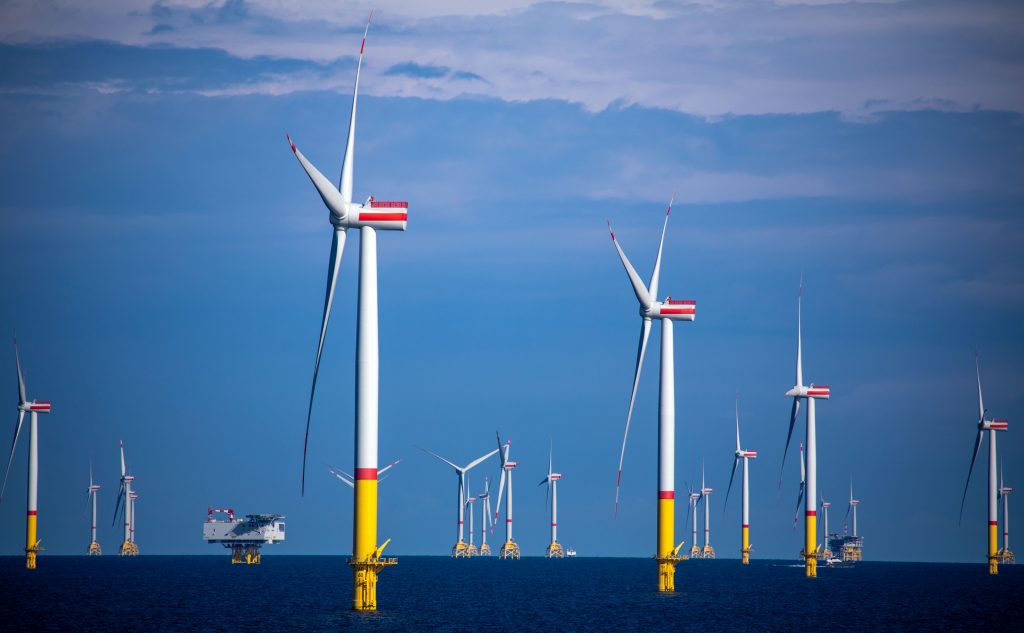- Germany and Denmark have struck a deal to boost offshore wind power capacity in the Baltic Sea.
- The wind parks are expected to generate three gigawatts — enough for up to 4.5 million households.
- Both nations said it's a step toward reducing the region's reliance on Russian gas and oil.
Germany and Denmark have agreed on a $9 billion deal to build an offshore wind power project in the Baltic Sea that authorities said would provide enough power for up to 4.5 million households by 2030.
Announced Monday, the deal involves Denmark boosting its planned wind power capacity on Bornholm Energy Island from 2 to 3 gigawatts, per State of Green, an energy and climate arm of the Danish government.
The deal also includes a 292-mile subsea cable that links Bornholm's wind parks to the German grid in a bid to reduce the region's reliance on Russian gas and oil.
Currently, Denmark and Germany have offshore wind power capabilities of 1.5 gigawatts and 1 gigawatts in the Baltic Sea, accounting for more than 90% of the region's wind energy, State of Green wrote in its statement.
The infrastructure to connect the wind parks will cost $3 billion, while $6 billion would be needed to bolster the wind parks, Bloomberg reported, citing the Danish government.
In State of Green's Monday statement, Dan Jørgensen, Denmark's minister for climate, energy, and utilities, called the project a "landmark in energy history" at a time when "international cooperation is more urgent than ever before."
Robert Habeck, Germany's minister for economic affairs and climate action, said the "flagship project" would help Europe achieve "energy security and climate neutrality."
On Friday, German Foreign Minister Annalena Baerbock emphasized her nation's desire to pursue the "enormous" potential of offshore wind energy in the Baltic Sea, which she said could generate up to 90 gigawatts of power.
"Wind energy from the Baltic Sea will help us fight the climate crisis. And it is an investment in our security: it will help make us less dependent on gas from Russia," she said.
The world's total wind power capacity — both onshore and offshore — is now up to around 837 gigawatts, according to the Global Wind Energy Council. China holds the largest share in the world's offshore wind market, having raised its offshore wind capacity to 27.7 gigawatts in 2021, per the GWEC.
The European Commission has set a target for increasing its nations' total wind power capacity to 300 gigawatts by 2050, up from the 16 total gigawatts they have installed as of May.
